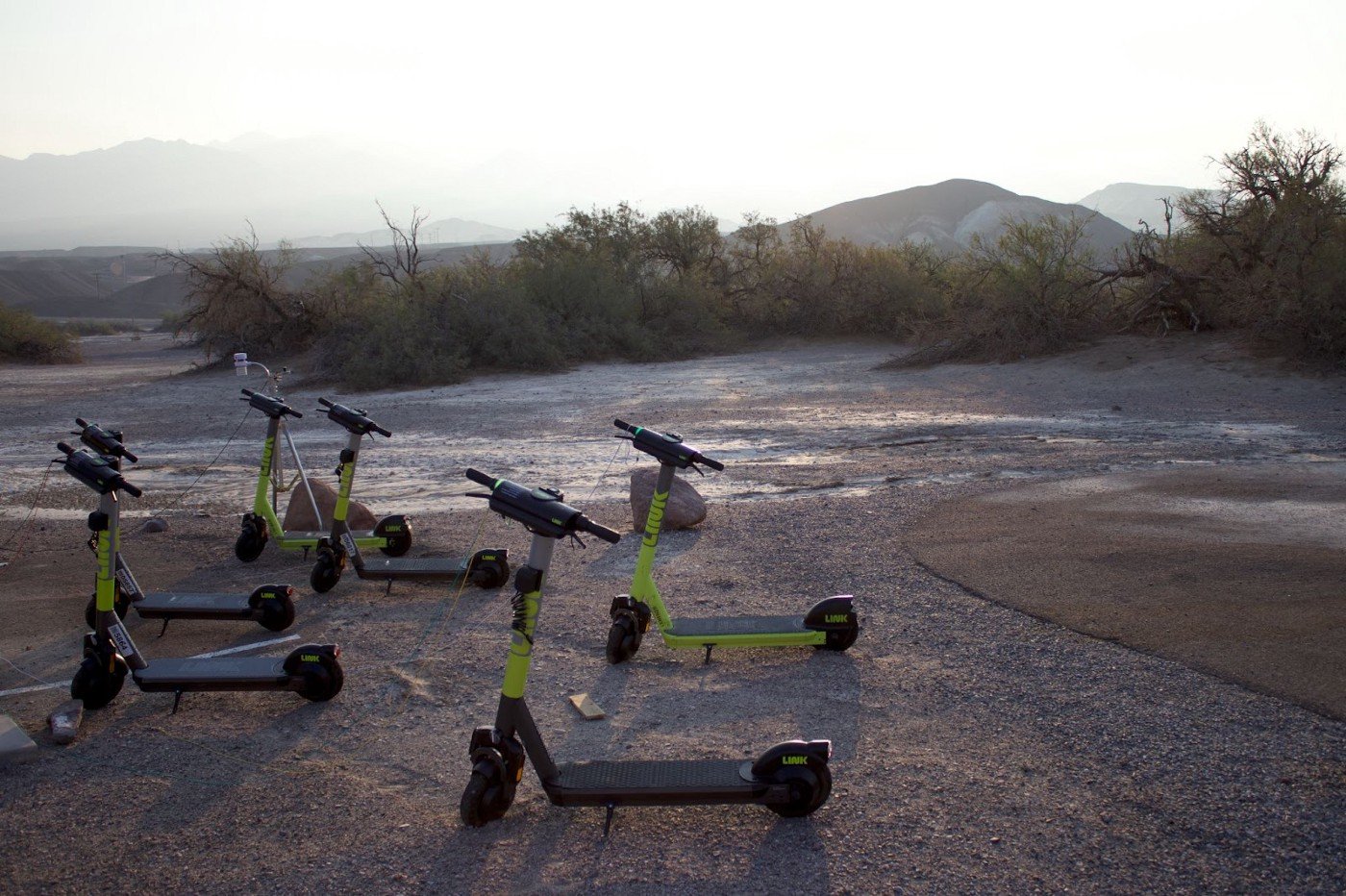How Scooters Keep Their Cool
What a safe micromobility battery has in common with a safe street
By Paul Steely White
London, San Francisco, New York City, Bremen and Auckland have all had highly publicized brushes with e-bike and/or e-scooter battery fires of late. While there is no evidence that battery fires occur any more frequently than old-fashioned internal combustion engine fires, all it takes is one bad incident to shake a city’s faith in micromobility. E-scooters are now banned from all public transport in London over recent e-scooter battery fires, and Scotland is considering a similar move. If battery fires continue, further restrictions are likely.
How can battery fires be prevented?
In the most fundamental way, engineering a safe battery system is similar to designing a safe street. The safest streets are those that are designed to account for the random things that can happen, so that when they do, the results are not catastrophic. Superpedestrian’s LINK e-scooter, for example, has three independent brakes — two mechanical and one electronic — just in case one fails. We design our battery systems with the same approach, with multiple layers of redundancy, to keep riders safe.
Superpedestrian’s approach to battery design and battery management software– unique in the sector– has been proven over tens of millions of trips across millions of miles. While battery fires aren’t what most riders are thinking about when they get on a scooter, cities should be asking shared e-scooter and e-bike operators what they are doing to protect riders. For anyone responsible for choosing the safest micromobility system, this is the most important question to ask a potential vehicle or service provider: What is your battery track record? How many fires have your vehicles experienced?
After millions of rides, Superpedestrian’s e-scooter has proven itself as the safety leader
Why batteries deserve special attention
Cities view battery fires as serious public safety hazards for good reason. Lithium-ion batteries, now standard on all types of small electric vehicles, house highly flammable liquid electrolytes. When these fluids ignite by overheating or a short circuit, they can lead to major fires that are not just hard to extinguish, but also emit hydrofluoric acid and other toxins.
Before joining the Superpedestrian team in 2020, I thought occasional “thermal incidents’’ were just an unfortunate but unavoidable part of the micromobility business. But after an education from Superpedestrian’s lead electrical engineering team, I now understand that Superpedestrian’s unique approach to managing battery risk comes down to a few distinct things that we do differently compared to standard industry practice.
Patented Safety Systems and Battery Management
Superpedestrian holds over 40 unique patents, by far, the most patents of any other operator in the micromobility sector. About half of these pertain to Vehicle Intelligence, our one-of-a-kind system that performs autonomous management functions critical to battery safety.
Vehicle Intelligence enables our battery management to autonomously detect electrical anomalies that could lead to a safety issue down the road. It can also detect water ingress, which can lead to short circuits. While a scooter is on-trip, our unique operations system continuously tests over 100 battery-specific parameters. Then, Vehicle Intelligence can take the scooter out of service if it detects something abnormal around the battery and its casing.
Investment in Safe Design
Batteries are the most expensive — and potentially dangerous — component of an e-bike or e-scooter. At Superpedestrian, we realized that by designing our own, the battery would be safer with better quality components, all while costing just slightly more than industry-standard off-the-shelf options. What’s more, by designing in-house and directly overseeing the production we’re able to incorporate redundant layers of battery encasement to protect it from weather, vandalism and regular wear and tear.
In 2021, we took our scooters to Death Valley to confirm how our scooters, including batteries, keep their cool
Vision Zero for Batteries
Our approach to battery design is similar to how today’s leading urban planning and transportation engineers approach street design: design for safety first, taking human error into account. A well-designed battery, like a well-designed street, keeps people safe even in extreme conditions. This fail-safe approach, a hallmark of “Vision Zero” programs, has been a part of Superpedestrian’s DNA since our inception at MIT in 2013. And like safe streets, the most important criterion is performance: how well does a particular design actually perform in real world conditions?
Our track record speaks for itself. Our steadfast commitment to safety is why previously skeptical city officials are now embracing micromobility. With the recent additions in Nottingham, UK; the south of France; and Turkey Superpedestrian now operates fleets of LINK scooters in 60 cities and 10 countries. By the end of 2022, it’s my hope that we can earn the right to serve many more. And as we do, it will be because we truly put safety first.


